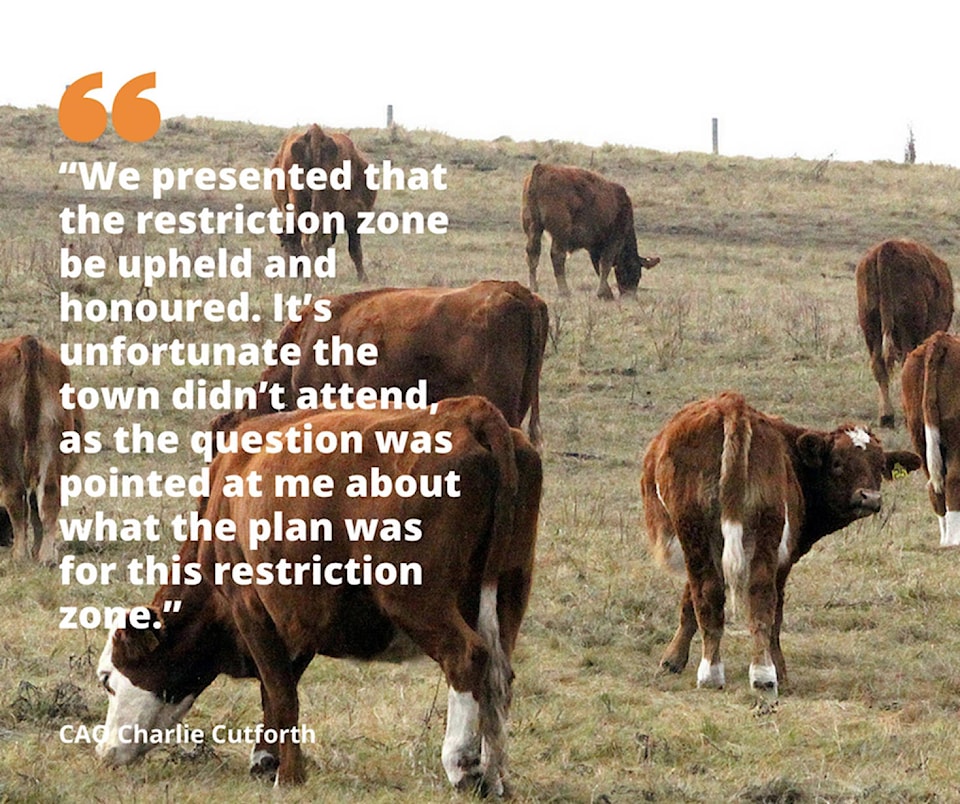A recent board review by the Natural Resources Conservation Board (NRCB) held in Ponoka regarding an application for a confined feeding operation (CFO) has seen the Town of Ponoka drawing some ire from the county.
So disappointed was Matejka during Ponoka County’s council meeting Feb. 13, that he put forth a motion to send a letter noting as much and to ask why the town was not represented.
The proposed CFO is located northwest of Ponoka, along Range Road 261 near Township Road 432, was originally denied as it is located within the county’s two-mile restricted zone from the town boundary. However, an appeal of that decision was launched, which led to the review hearing in Ponoka on Jan. 29.
CAO Charlie Cutforth, along with Matejka and Coun. Nancy Hartford attended the hearing. However, no one from the town was present, although the town sent its regrets plus a written submission was provided by the town.
For Cutforth, that presented a difficulty as he was quizzed on what the town has proposed for its land along the east side of Highway 2 and along Highway 53.
“We presented that the restriction zone be upheld and honoured. It’s unfortunate the town didn’t attend, as the question was pointed at me about what the plan was for this restriction zone. My response was something like that question is better answered by the town,” he said.
A decision on the appeal isn’t expected for at least a month.
County joins FCM
For the first time in many years, Ponoka County will be a part of a nation-wide organization that represents municipal governments.
Following a presentation from representatives of the Federation of Canadian Municipalities (FCM) council voted to spend the $1,900 membership fee and join the group that lobbies for both urban and rural municipal issues.
Al Kemmere, president of Alberta Association of Municipal Districts and Counties (AAMDC), as well as Lorne Olsvik, a councillor with Lac Ste. Anne County, spoke about the benefits of being one of the 2,500 FCM members.
Kemmere is an FCM national director, while Olsvik is a rural representative and is on the FCM member relations committee.
“FCM is a voice for so much of what municipalities need in Canada,” said Kemmere, noting all of the federal funds and programs the group has lobbied and negotiated for over the years.
Olsvik added that rural municipalities need to be a part of FCM now more than ever.
“We’ve seen a lot of progress in the last several years and been successful with a lot of programs, initiated by the rural voices at the table,” he said. “We’ve developed a good relationship with the federal government and they know we have the support.”
Reeve Paul McLauchlin stated being a member is something council should do strictly from a supportive standpoint. His view was supported by the rest of council, which approved spending the money on membership for 2018.
